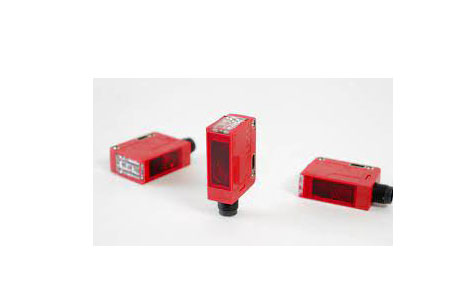Key Takeaway
The maximum range of a photoelectric sensor depends on the sensor type. Diffuse sensors can detect objects up to 1 meter away, while retro-reflective sensors reach up to 10 meters. Through-beam sensors offer the longest range, detecting up to 100 meters or more. These ranges vary based on environmental conditions and sensor model.
Factors like light intensity, object reflectivity, and environmental interference can affect the sensor’s range. To optimize performance, ensure proper alignment and regular maintenance of the sensor.
Factors that Influence the Range of Photoelectric Sensors
Several elements affect the range of photoelectric sensors, and knowing these factors can help you select the right one. First, the light source is crucial—infrared or visible red light often performs differently depending on the target. Ambient lighting and environmental conditions like dust, fog, or temperature fluctuations can either reduce or extend the sensor’s range. Another factor is the size and reflectivity of the object being detected. Highly reflective materials will allow for a longer detection range, while darker, less reflective surfaces may limit it. Proper sensor alignment and positioning are also critical for maximizing range. A well-aligned sensor can cover its entire specified range with precision.

Maximum Ranges Across Different Types of Photoelectric Sensors
When it comes to photoelectric sensors, understanding their range capabilities is essential for optimizing performance. Through-beam sensors, which consist of separate emitter and receiver units, are known for their impressive range. These sensors can detect objects as far as 50 meters or more, making them ideal for applications that require long-distance detection. Their uninterrupted beam ensures accurate and consistent detection, even in challenging environments. Retroreflective sensors, on the other hand, offer a medium range of around 10-15 meters. By using a reflector, they balance distance and reliability, making them suitable for mid-range tasks.
Diffuse sensors, the shortest-range type, rely on light reflection from the object itself. Their detection range is usually up to 2 meters, which limits their use to close-proximity applications. However, they are highly effective for tasks that require precision in shorter distances. Each type of sensor has its strengths, and understanding their specific range capabilities will help you choose the right one for your industrial needs. The key to optimizing their performance is knowing how and where they work best.
How to Measure and Test the Range of a Photoelectric Sensor
Testing a photoelectric sensor’s range is a straightforward process but requires careful attention to detail. Begin by placing the sensor at a fixed location and use a calibrated measuring tool to move an object toward the sensor. The object’s material and reflectivity play a crucial role in determining the “effective” range. Once the sensor detects the object, you’ve identified its range. Be sure to perform these tests in environments free from external interferences like light or dust to ensure accuracy.
In addition to controlled testing, it’s vital to assess the sensor under real-world conditions. This includes checking how it responds to environmental factors such as temperature variations, humidity, or the presence of contaminants. Regular testing ensures your sensor is always performing at its best. This process, while simple, is crucial for engineers to maintain sensor accuracy and reliability, especially in high-demand industrial environments.
Applications Requiring Long-Range Photoelectric Sensors
In industries like material handling and packaging, long-range photoelectric sensors are indispensable. Through-beam sensors with a range of up to 50 meters play a critical role in monitoring conveyor belts, ensuring that products are accurately tracked across large distances. In packaging, these sensors are used to detect objects on high-speed production lines, preventing mishandling and improving operational efficiency. The precision and long-range capabilities of these sensors make them a valuable tool in fast-paced, high-stakes industrial settings.
Warehouse management is another area where long-range sensors excel. These sensors can detect pallets from significant distances, optimizing the flow of goods and reducing the risk of errors. Their reliability ensures that even in large-scale operations, the sensors provide accurate readings that help maintain smooth operations. For industries that depend on distance detection, choosing the right long-range sensor is key to minimizing downtime and maximizing productivity.
Optimizing Sensor Range for Specific Industrial Applications
Optimizing the range of your photoelectric sensor is essential for ensuring peak performance in industrial applications. The first step is choosing the right sensor type for your needs. Through-beam sensors are ideal for long distances, while diffuse sensors work better for shorter tasks. Once the right sensor is selected, maintenance becomes crucial. Regularly cleaning the sensor’s lens to remove dust and debris can prevent range degradation, ensuring that it continues to perform as expected over time.
Adjusting the sensor’s sensitivity settings can further enhance its range. By fine-tuning these settings, engineers can optimize detection accuracy, even in challenging environments. Additionally, proper placement of the sensor, away from interfering light sources and reflective surfaces, ensures it operates at maximum efficiency. Regular maintenance and optimization are vital steps that ensure sensors are always performing at their peak, providing reliable, accurate readings that enhance industrial productivity.
Conclusion
Understanding the maximum range of photoelectric sensors and the factors influencing it is essential for any industrial application. Selecting the right sensor type, testing it under real conditions, and optimizing its placement are key steps to ensuring reliable performance. With proper maintenance and configuration, photoelectric sensors can consistently meet the needs of diverse industrial applications. By mastering these sensors, engineers can enhance both operational efficiency and system reliability.
